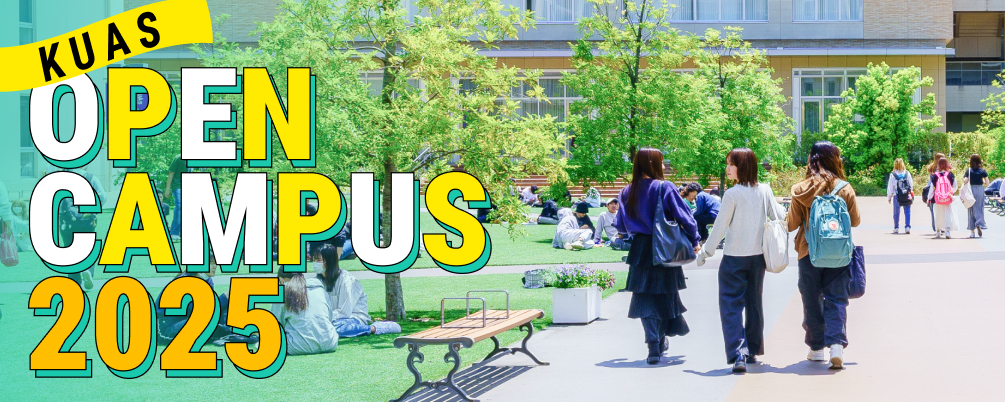電気工学と電子工学で世界最大の学会「米国電気電子学会(Institute of Electrical and Electronics Engineers、IEEE)」は、最高位メダルの一つであるEdison Medal(エジソンメダル)を本学ナガモリアクチュエータ研究所の松波弘之特任教授に授与すると発表しました。(2022.12.1)
エジソンメダル は発明家トーマス・エジソンの名にちなんで創設され、1909年から毎年授与されている、電気電子工学関連における最古の賞です。電気電子工学において賞賛に値する業績をあげた研究者に贈られる、ノーベル賞に比類する名誉ある賞です。IEEEによると、松波弘之特任教授の「SiC半導体材料の開発とそのパワーデバイスへの応用における先駆的貢献」に対して授与されました。過去の日本人受賞者は2000年の西澤潤一氏(東北大学)、2011年の赤﨑勇氏(名城大学、2014年ノーベル物理学賞受賞者)、2021年の伊賀健一氏(東京工業大学)の3人だけで、松波弘之特任教授が4人目の受賞者です。
IEEEのエジソンメダル受賞を受けて、松波弘之特任教授は「43年前に移り住んだ八幡市にある石清水八幡宮の麓。神社の境内には白熱電球を完成したトーマス・エジソンゆかりの地として ‘Genius is one percent inspiration, and ninety-nine percent perspiration.(天才は1%のひらめきと99%の汗である)’と刻印されているモニュメントがあります。振り返れば、私の研究生活も失敗の繰り返しでしたが、楽しく研究を続けさせてもらっていました。わずか1%のひらめきによって未来が開けていったと思っています。このたび、栄えある賞を授与されることとなりましたが、今の研究者たちも失敗を恐れず、楽しみながら誰もしていないことに挑戦し続けていってほしいです」とコメントいただきました。
IEEEは松波弘之特任教授の業績に対して「松波がいなかったら、今のSiCのブームはなかった」とコメントを寄せています。授賞式は、2023年5月5日に米国Atlantaで行われる予定です。
松波弘之特任教授と炭化ケイ素(SiC)半導体
炭化ケイ素(SiC)半導体は、モーターの駆動効率を改善し、太陽光発電や風力発電システムの電力ロスを低減させ、グリーンイノベーションの実現を加速する次世代半導体として注目されています。世界中の半導体メーカーが大規模な投資をして工場を建設し、自動車メーカーが急速に電気自動車に採用しています。しかし、SiC半導体は優れた特性は知られていたものの、製造は困難を極めるため、ほとんど研究されていませんでした。
松波弘之特任教授は50年以上前に京都大学で実現困難なSiC半導体の研究に敢えて挑戦しました。20年に渡る研究を経て、1987年にステップ制御エピタキシャル成長法という、炭素原子とケイ素原子が同じパターンで並ぶ高品質なSiC結晶の製造方法を発明しました。さらにこの高品質なSiC結晶で、従来の半導体を遥かに上回る驚くべき性能(髙絶縁電圧特性を持ち、変換器の損失は現用のSiに比べて2桁程度低い)を持つパワー半導体デバイスを試作しました。実現不可能と考えられていたSiC半導体を用いた、次世代パワーエレクトロニクス技術の道を開いたブレークスルーです。この後、世界中でSiCの研究が急速に始まりましたが、松波弘之特任教授はSiC研究者の国際会議を立ち上げ、各国でのSiC半導体研究を先導しました。京都大学教授を退官後は活動範囲を学界だけでなく産業界に広げ、科学技術振興機構(JST)イノベーションプラザ京都館長として官僚や企業と協力し、官学産の連携による競争力のある日本のSiC産業の育成に尽力しました。現在も手を休めることなく、SiCアライアンス会長として企業や研究機関を支援し、NEDO次世代パワーエレクトロニクス・プログラム推進委員として国家プロジェクトを推進していますが、その傍ら本学の「未来展望ゼミ」で自らの体験談を交えて、SiCを含む半導体の技術の教鞭をとっています。本学の学生は、世界的な半導体研究の権威から、「半導体に関する原理」と「技術的イノベーション」について直接指導を受ける得難い経験をしています。
「未来展望ゼミ」の講義を行う松波特任教授
松波特任教授の講義に熱心に耳を傾ける学生たち
松波弘之特任教授の傑出した業績と多大な貢献に対して、これまでにも2013年の朝日賞、2017年の本田賞を含め、国内、海外から様々な重要褒章が授与されています。
(ナガモリアクチュエータ研究所 堂前伸一)
Professor Hiroyuki Matsunami becomes the fourth Japanese researcher to receive the IEEE Edison Medal
The Institute of Electrical and Electronics Engineers (IEEE), the world‘s largest professional association for electrical and electronic engineers, announced in December that the Edison Medal, one of their most prestigious honors, will be awarded to Specially Appointed Professor Hiroyuki Matsunami of the Nagamori Institute of Actuators.
Named after inventor Thomas Edison, the medal has been awarded annually since 1909 and is the oldest award in electrical and electronic engineering. Comparable in significance to the Nobel Prize, the award is presented to researchers in recognition of a career of meritorious achievement. According to the IEEE, the award was given to Professor Matsunami for his “pioneering contributions to the development of silicon carbide material and its applications to electronic power devices.“ Professor Matsunami is the fourth Japanese winner of the medal, joining Junichi Nishizawa (from Tohoku University) who received the award in 2000, Isamu Akasaki (Nobel Prize laureate from Meijo University) in 2011, and Kenichi Iga (from the Tokyo Institute of Technology) in 2021.
In response to this award Professor Matsunami said, “The grounds of Iwashimizu Hachimangu Shrine in Yawata City, where I moved to 43 years ago, are associated with Thomas Edison who perfected the incandescent light bulb. There is a monument engraved with the words ‘Genius is one percent inspiration, and ninety-nine percent perspiration.’ Looking back, my research life was a series of failures. However, I enjoyed continuing my research. I believe that the future was opened up by a mere 1% of inspiration. This time, I was awarded the prestigious award. I hope that researchers will not be afraid of failure and will continue to enjoy challenging things that no one else has done.”
Commenting on Professor Matsunami’s achievements the IEEE said that, ”Without Professor Matsunami, there would have been no current SiC boom.” The award ceremony will be held on the 5th of May 2023 in Atlanta, USA.
Professor Matsunami and Silicon Carbide Semiconductors
Silicon carbide (SiC) semiconductors are attracting attention as a next-generation technology that can help realize “green” innovation by improving the efficiency of motor drivers and by reducing losses in solar and wind power generation systems. Semiconductor manufacturers around the world are investing heavily to build SiC factories and car manufacturers are rapidly adopting SiC semiconductors for their electric vehicles. Although SiC semiconductors were known to have excellent properties, they were extremely difficult to manufacture and so little research was done on them.
More than 50 years ago, at Kyoto University, Professor Matsunami took up the challenge of researching SiC semiconductors. In 1987, after 20 years of work, he invented a step-controlled epitaxial growth method that produces high-quality SiC crystals in which carbon atoms and silicon atoms are arranged in the same pattern. Using this high-quality SiC crystal he prototyped a power semiconductor device with surprising performance far surpassing that of conventional semiconductors (having higher insulation voltage characteristics and converter losses about one hundred times lower than that of contemporary silicon devices). It was a breakthrough that paved the way for a new generation of power electronics technologies using SiC semiconductors, which had previously been thought impractical. Research on SiC soon began all around the world and Professor Matsunami launched an international conference for SiC researchers to help guide global SiC semiconductor research. Since retiring as professor at Kyoto University he has broadened his scope of activities beyond academia to the industrial world. As the director of the Japan Science and Technology Agency (JST) Innovation Plaza Kyoto he cooperated with government officials and companies to develop a competitive SiC industry in Japan through government-academia-industry collaborations. As chairman of the SiC Alliance he continues to support companies and research institutes, as well as helping to promote national projects as a member of the NEDO Next Generation Power Electronics Program Promotion Committee. He teaches semiconductor technology, including SiC, by sharing his own experiences. His students have the rare experience of receiving guidance on “principles of semiconductors” and “technical innovation” directly from a world-renowned authority in semiconductor research.
Professor Matsunami conducting class
Students listening intently to Professor Matsunami’s lecture
For his outstanding achievements and contributions Professor Matsunami has been presented with several other significant awards, both domestically and internationally, including the Asahi Prize in 2013 and the Honda Prize in 2017.
(Shinichi Domae, Nagamori Actuator Research Institute)




